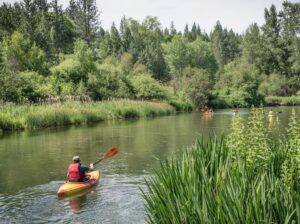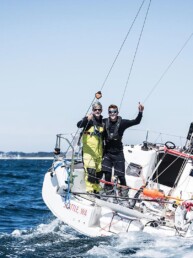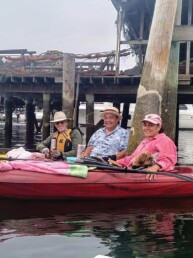Washington State Governor Jay Inslee has issued a proclamation declaring the week of July 22-28 to be statewide Paddle Safe Week. Find out why and get tips on paddling safe!
Supported by the Washington State Parks Boating Program, Paddle Safe Week will lead a statewide effort to create a culture of safety around paddle sports. The campaign recognizes that Washington’s diverse waterways require different skills, preparation, and safety equipment.
In the last five years, paddlers have come to represent 55 percent of the statewide recreational boating fatalities. Growing  popularity and lack of safety education have contributed to this shift.
popularity and lack of safety education have contributed to this shift.
“Paddle Safe Week is a great opportunity to help reduce paddle sports-related fatalities by sharing resources and educating the community on how to recreate safely,” said Boating Program Manager Rob Sendak. “Paddlers should know that kayaks, canoes and stand-up paddleboards (SUP) are subject to boating laws and regulations.”
Sendak urges all participants to boat responsibly to prevent accidents, minimize impacts and avoid conflicts with other boaters.
The Washington State Parks Boating Program maintains a collection of free digital safety resources and information for paddlers. The single, most important way to paddle safely is to always wear a life jacket on the water. State law requires all vessels, including canoes, kayaks and stand-up paddleboards to have at least one properly fitted Coast Guard-approved life jacket for each person on board.
The program also recommends the following safety practices:
- Get Educated – Find classes through local clubs and outfitters, city and county parks and recreation departments, and online.
- Always use a SUP Leash – Stay tethered to the paddleboard for extra flotation and a chance to stay alive in an accident. For stand-up paddlers a leash is a necessity.
- Carry Essential Gear – Carry the essentials for safety, emergency communications and comfort.
- Check and Understand the Weather – Check the weather frequently before and during each trip, keeping an eye on current conditions and forecasts.
- Protect Against Cold Water Shock – Avoid the biggest risk, which is not hypothermia but cold-water shock. Cold water shock occurs in the first stage of immersion (from an accidental fall overboard). Be prepared. Wear a life jacket.
- File a Float Plan – Before heading out, study the intended route, and let someone know the plan.
- Paddle with a Group – Go out with at least three people and stay close enough for visual or verbal contact.
- Avoid Alcohol and Drugs – Stay alert and maintain situational awareness. These are key for safety on the water.
- Learn how to self-rescue – Know how to get back in or on the craft. Paddlecraft are typically safe, but there’s a higher risk of going overboard and becoming an accidental swimmer.
- Label your Paddlecraft – Use a sticker or some other means to provide contact information for privately owned paddlecraft. When empty paddlecraft are found adrift, it’s assumed someone is in danger. Calling the owner of a craft found adrift can help prevent unnecessary searches and free up resources.
- Be Visible to Other Boaters – Paddle to be seen. Wear bright neon and contrasting colors, put highly reflective tape on paddles, use a flagpole and carry a bright light.
Editor
48° North Editors are committed to telling the best stories from the world of Pacific Northwest boating. We live and breathe this stuff, and share your passion for the boat life. Feel free to keep in touch with tips, stories, photos, and feedback at news@48north.com.






